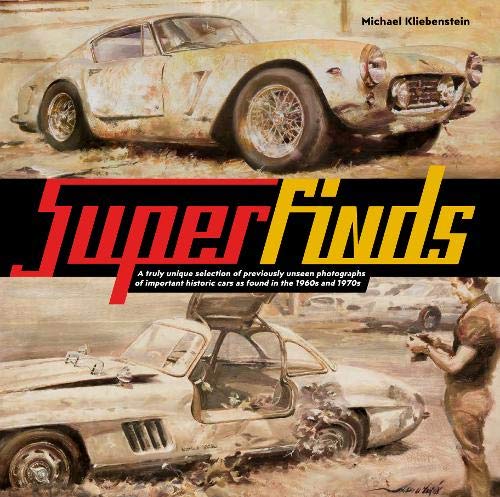
his pictorial journey will take the reader from the very beginning of the Skunk Works’ very first project (XP-80 Shooting Star) and follow the program through prototype build-up, first flight and, if they reached the frontline, operational service.
This pictorial journey will take the reader from the very beginning of the Skunk Works’ very first project (XP-80 Shooting Star) and follow the program through prototype build-up, first flight and, if they reached the frontline, operational service. This treatment will be repeated for each of the 30 unclassified program designed and built by the Skunk Works. Each program will form a chapter of at least two pages in length, with a maximum of 14 pages being allocated for programs that went into production and merit more detailed coverage, such as the P-80/F-94/T-33 family, C-130 family and, of course, the A-12 and SR-71.
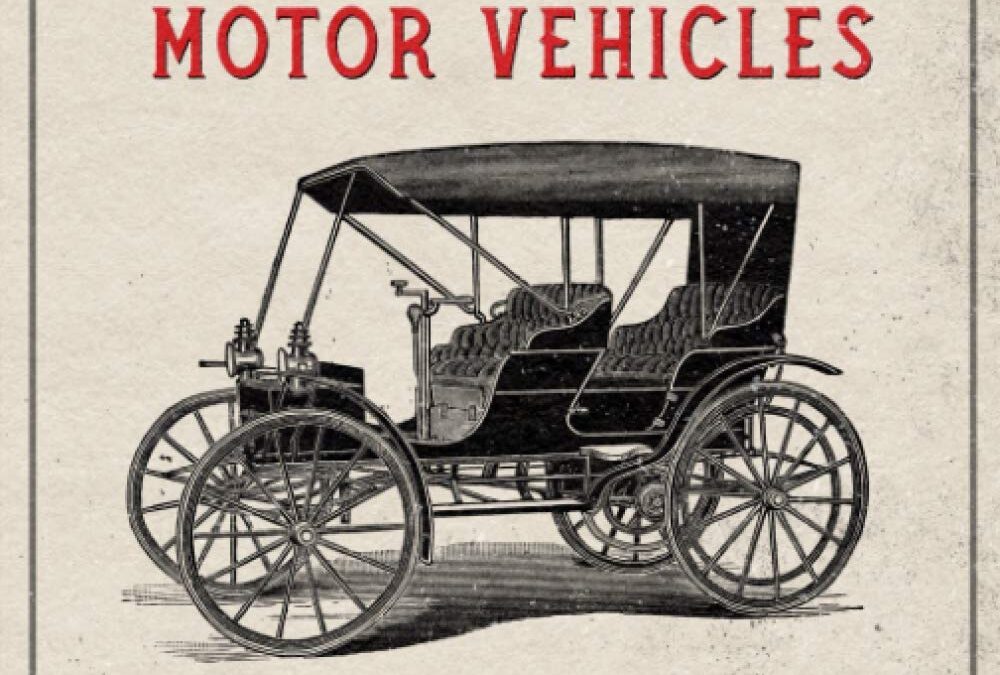
More than 500 detailed illustrations enhance this contemporary guide to the inner workings and mechanics of turn-of-the-century automobiles, trucks, and motorcycles.
Released in 1911 as “Self-Propelled Vehicles: A Practical Treatise,” James Homans’ spectacular, all-encompassing book about the fascinating world of gas-powered, electric-powered, and steam-powered motor vehicles leaves no stone unturned in its celebration of the classic automobile.
Classic car collectors, racers, and enthusiasts will enjoy this thorough look under the hood as Homans dissects every part of the “horseless carriage” from a unique and contemporary viewpoint that offers a keen insight into the bygone age of dramatic motoring. Antique Cars and Motor Vehicles spans more than 640 pages, immersing readers in a world of automotive history, vehicle parts, driving gears, steering, suspension, engines, exhaust, and even old fashioned American road signs.
The hundreds of Images of cars, engines, parts, and mechanic operations are crisp and detailed, created by skilled master artists with a sharp eye for detail. It’s everything that you ever wanted to know about classic motoring in a single, entertaining, and well-illustrated volume!
This enhanced 2020 re-release features enlarged 7” x 10” pages that retain the original classic type font and page layouts, crisp, digitally re-scanned images, and a new retro cover design created to enhance your reading room and garage.
Table of Contents:
Chapter 1 – History of Self-Powered Vehicles
Chapter 2 – The Make-Up of a Motor Carriage
Chapter 3 – Compensation and Compensating Devices
Chapter 4 – The Driving Car
Chapter 5 – The Steering of a Motor Vehicle
Chapter 6 – Combined Steering and Driving
Chapter 7 – The Supports of a Motor Vehicle
Chapter 8 – Motor Carriage Wheels
Chapter 9 – Tires
Chapter 10 – The Construction of Tires
Chapter 11 – Pneumatic Tire Troubles
Chapter 12 – Care of Pneumatic Tires
Chapter 13 – Types and Merits of Automobiles
Chapter 14 – The Theory of Heat Engines
Chapter 15 – The Parts of a Gas Engine
Chapter 16 – The Four-Cycle Gas Engine
Chapter 17 – The Two-Cycle Gas Engine
Chapter 18 – Compression and Expansion
Chapter 19 – Efficiency in a Gas Engine
Chapter 20 – Exhaust
Chapter 21 – Water Cooling for the Cylinder
Chapter 22 – Air Cooling for the Cylinder
Chapter 23 – Power Elements of a Gas Engine
Chapter 24 – Carburetors
Chapter 25 – Ignition
Chapter 26 – Balancing Gasoline Engines
Chapter 27 – Governing and Control of a Gasoline Engine
Chapter 28 – Clutches
Chapter 29 – Transmissions
Chapter 30 – Brakes
Chapter 31 – Roller Bearings
Chapter 32 – Lubricants
Chapter 33 – Practical Operation of Gasoline Engines
Chapter 34 – Motorcycles
Chapter 35 – Steam Engines for Automobiles
Chapter 36 – Boilers and Flash Generators
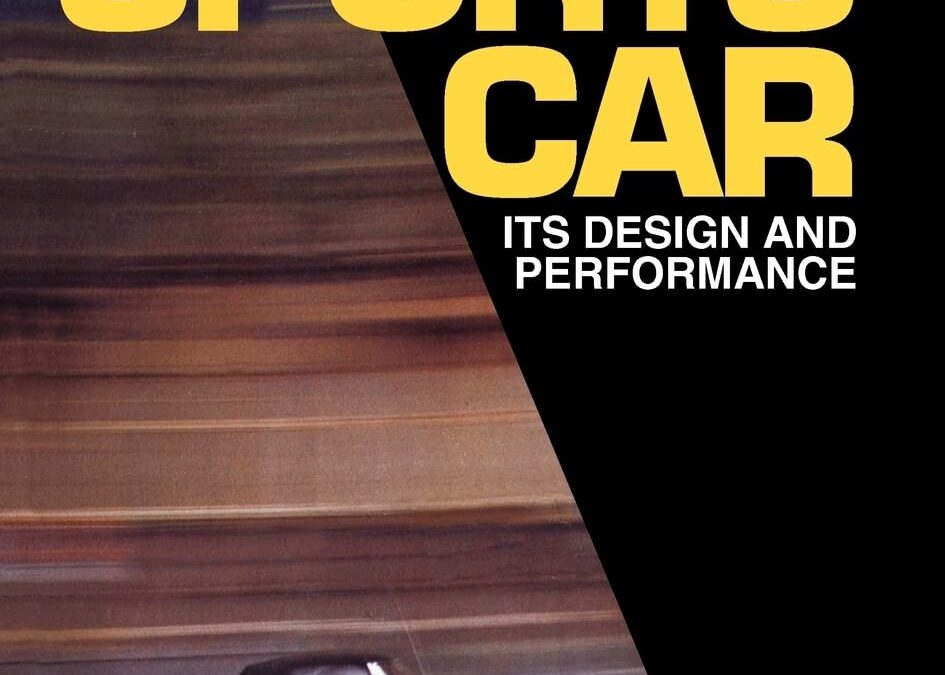
Colin Campbell offers a thorough and systematic examination of some of the finest achievements in sports car design through the late seventies. His technical survey spans engine and valve train designs, tire and suspension considerations, chassis construction, brakes, and standards of performance. Of particular value and interest-especially to design engineers working on new car projects-is the section containing detailed design studies on outstanding production sports cars from four manufacturers: Jaguar, Lotus, Mercedes and Porsche. By pointing out design features that are of particular merit with regard to overall performance, this book should also prove highly useful to readers who are choosing and preparing a car for Showroom Stock racing, or who are designing their own sports cars.
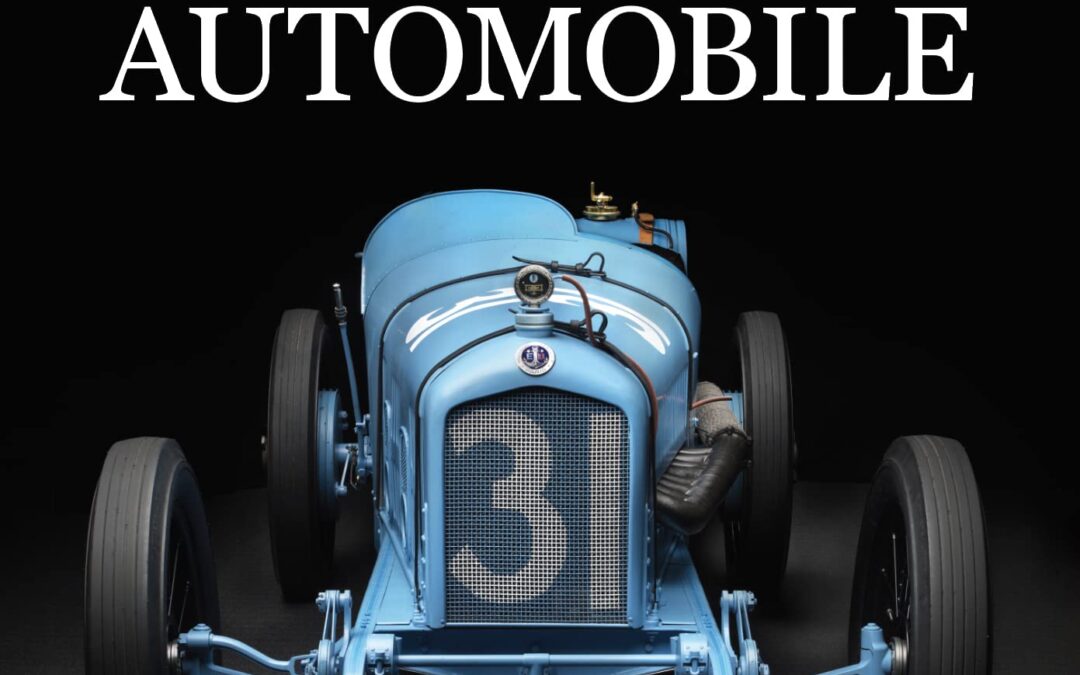
In the last one hundred years, cars have shaped our lives. Other everyday cultural artifacts, such as watches, telephones, musical instruments, and televisions, have certainly had influence, but the car is by far the most significant. Now, change is coming for the car, as it is for so many other industrial artifacts. Once, cars were distinct machines. Now, they are evolving into multifunctional digital devices. New fuels, new modes of travel, and new technologies are disrupting the traditional role of the much-loved family car.
What is to become of this material legacy? Should we really let go of it? Without memory, personal and shared, we lose our way, our individuality, and our culture. This proposition is at the heart of The Archaeological Automobile.
Miles C. Collier’s landmark approach uses an “archaeological mindset” to interpret the automobile as a cultural artifact in six themes:
The Development of the Automobile describes how the car emerged from a pressing human need for mobility, tracing our relationship with horses, our invention of the bicycle, and how we turned our backs on both as daily transport for the allure of the car.
The Rise of the Collectible Automobile asks how and why ratty relics decaying in recycling yards can become valuable and treasured collectibles. It reveals the effect of cultural influences on our perception of cars and on the dynamics of the collector car market.
The Archaeological Mindset picks up a wrench, gets into the workshop, and tracks the restoration of a 1919 Ballot Indy car using hands-on experience and background research while deploying the “archaeological imagination.” The archaeological clues are in the detail.
Collecting and the Archaeological Automobile deals with the characteristics of collecting. Why do we accumulate “stuff”? Is it greed? Is it passion? Is it a desire for legacy? And what makes a “good” collection? Is it bling? Is it style? Is it material worth? The answer lies in connoisseurship.
Restoring the Archaeological Automobile debates the merits of diverse restoration strategies and the reasoning behind them, including the tricky question of how to repaint the tilt-front nose of a 1964 Alfa Romeo GTZ racing car and still preserve the evidence of forty years of accumulated sandblasting and chipping.
The Archaeological Automobile of the Future is a call to action. Cars as we know them are customarily trashed, government regulations encourage indifference, and the skills and knowledge associated with fixing them are slowly vanishing as we lose older generations of experienced craftsmen. How can we preserve humanity’s treasure trove of automotive knowledge for generations to come?
Filled with engaging stories and practical examples, this is a handbook of the most thoughtful practices, not just for automobile owners and the historical car industry, but for collectors, professionals, and users of all kinds of industrial era artifacts.
The Archaeological Automobile combines scholarship, pertinent anecdotes, style, and experience to provide a stimulating account of why we should all be archaeologists now.

Mike Spence was one of the most liked and respected drivers of grand prix racing in the 1960s. A loyal friend and team-mate of Jim Clark, Mike also raced for BRM and Emeryson in Formula One and in sports car racing, he drove the iconic Chaparral 2F. He forged a reputation as being an outstanding development driver with real mechanical sympathy.
He was at his peak and was on the cusp of winning both the Indianapolis 500 and becoming a winner in grand prix racing when he was killed in a practice accident at the Indianapolis Motor Speedway on 7 May 1968.
There are not too many two-time Formula One race winners that have not merited a published biography of any description, but at long last this modest, laconic and quiet man gets the focus that he deserves in what will be the definitive and only authorised biography of his life.
This was no mere ‘number two’ driver to Jim Clark, Phil Hill or Jackie Stewart; this was someone who worked in the shadows to achieve the optimum performance for everyone he raced for.
Award-winning author Richard Jenkins follows up from his debut book – Richie Ginther: Motor Racing’s Free Thinker – with all the same hallmarks that saw his first book win multiple awards: comprehensive research, a balanced, thoughtful, flowing and detailed narrative and numerous photos that have never been seen before, including some from Mike’s personal collection.
With contributions from Mike’s widow, his brother and his former long-time mechanic, there are unique personal insights into Mike as a person, It is testament to Mike’s reputation among his peers that the likes of Richard Attwood, Jim Hall, David Hobbs, Alan Rees and Sir Jackie Stewart, and many others, have been involved in helping to tell Mike’s story as he now comes out of the shadows into full focus.
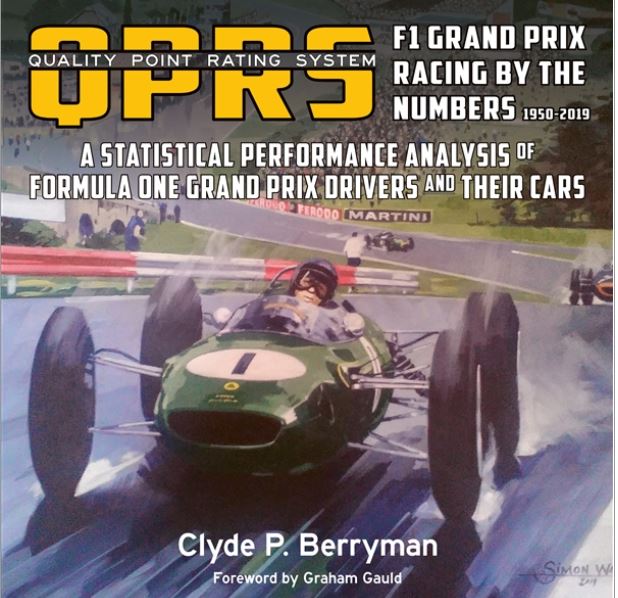
AVAILABLE APRIL 2021
WAS IT THE DRIVER, OR WAS IT THE CAR? That seems to be the age old, eternal question when motor racing enthusiasts gather to discuss the relative merits of Formula One Grand Prix drivers. Author Clyde Berryman devised a mathematical formula rating system, the Quality Point Rating System (QPRS), to objectively analyze and rate driver and car performances separately and came up with his own ranking system which was first featured in the July 1999 issue of F1 RACING Magazine.
This book is the updated and comprehensive QPRS study of Formula One Grand Prix racing drivers and cars from 1950 to 2019. It has an introductory section which discusses the principles behind the rating system and the major changes which have taken place over the evolution of F1, which often make direct comparisons quite difficult. Every chapter covers each decade with a short summary of the racing which took place, a QPRS ranking of the 10 best drivers and 10 best cars of the decade, and annual tables which provide the season calendar and the historical championship points, and the QPRS driver and car ratings for each year.
There are some all-time ranking tables and other pertinent analyses contained in summaries at the end of the book. In addition to maps of the many circuits used throughout F1 history, this massive 500-plus page volume features the exceptional artwork of some of the leading contemporary motor racing artists in the world.
- Hard cover with dust jacket
- 286 x 229mm (landscape)
- 528 pages
- More than 173 original art and 77 illustrated track maps

Gabriel Voisin, Henry Farman and the World’s First Practical Aeroplane
This is the story of an unjustly neglected landmark in the history of technology: the first comprehensive account of the genesis and evolution of the Voisin biplane with which Henry Farman proved to Europe at least that heavier-than-air flight was a practical proposition, and which has been eclipsed in the popular imagination by the Wright brothers’ 1903 breakthrough at Kill Devil Hills.
As well as chronicling the intense rivalry between the Old World and the New, it explores the technical background of Farman’s Voisin and charts its wider social and cultural impact in the US and Europe while illuminating the intelligence, ingenuity and indomitable spirit of the characters involved.
Relying on primary sources wherever possible, lavishly illustrated by contemporary photographs and with short biographies of all of the main protagonists, it unravels a complex tale of intrigue, daring innovation, personal courage and dogged determination in a world of doers, dilettantes and daredevils, where autodidacts mixed with aristocrats and theories with inspired pragmatists.
They emerge as a colorful bunch of fierce individualists competing against each other and their transatlantic rivals to realise an ambition which was rightly hailed as the dawn of a new era. As such, their achievements merit celebration alongside the other epoch-defining beacons of Modernism that shown from Paris in the first years of the last century.
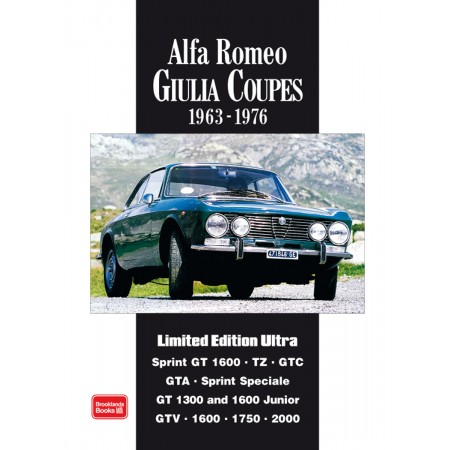
This book, covering the Giulia Coupes of the 60s and 70s provides a handy reference source in a very complicated area of Alfa Romeo history. From the earliest curvaceous coupes by Bertone, through the more aggressively styled Zagato SS to the very special TZ models and on to the final 1750 and 2000 cars with their much quarter styling, the Giulia coupes offer a remarkable variety. In the 1960s and 70s enthusiasts could delight to the sight and sound of the Alfas on the race tracks, but now that they are no longer in production, surviving examples of the Giulia coupes are greatly appreciated by those same enthusiasts. That so many Giulias succumbed to the rust for which Italian cars of the 60s and 70s were notorious only makes the possession of a good example all the more desirable and this book will persuade many more people of the undoubted merits of these sporting coupes. This book traces the progress of ‘one of the greatest coupes of all time as well as one of Alfa’s best cars.
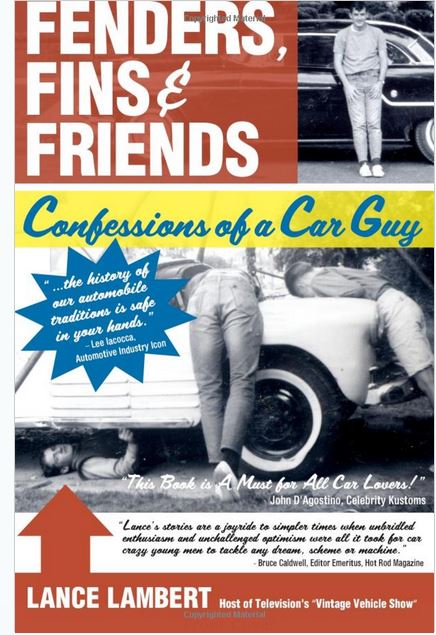
Every “car guy” has stories that elicit laughter, tears and admission of some bad choices.
Lance Lambert’s “Fenders, Fins & Friends: Confessions of a Car Guy” includes tales of riding in a 1939 ford as the steering wheel was removed and handed to him. Installing a siren in a 1955 Ford proved to be a bad decision. Putting five friends as far back as possible in a rock band’s van resulted in wheels stands and applause from admiring fans. Sitting in a 1949 Chevrolet while surrounded by five police cars and numerous guns pointed his direction caused some concern. “Fenders, Fins & Friends: Confessions of a Car Guy” reveals all that is good about the world of old cars and why being a Car Guy is the best way to enjoy life.
“…The history of our automobile traditions is safe in your hands.” Lee Iacocca, Automotive Industry Icon
“Lance’s stories are a joyride to simpler times when unbridled enthusiasm and unchallenged optimism were all it took for car crazy young men to tackle any dream, scheme or machine.” Bruce Caldwell, Editor Emeritus, Hot Rod Magazine
“Lance’s writings remind us of the sizzle that we were, or maybe could have been or wanted to be; his writings take us back to presumably simpler times of dreamy days, giving us peepholes back to the olden days. A great book from back in the day.” Don Weberg, Editor & Publisher, Garage Style Magazine
“Read this and you will gain insight into a down-to-earth soul, with a big heart, and an entertaining way of seeing the world.” Theresa Poalucci, Publisher, Journal Newspapers
“Lance’s humorous storytelling style makes you feel like you are sitting in the front seat with him as he drives you through his amazing ‘car guy’ life.” Sandy Scott, Director of Operations, Petersen Automotive Museum
“Lance Lambert is the Garrison Keillor of car stories. His nostalgic and chuckle worthy stories always put a smile on my face.” M.J. McDermott, KCPQ Television Reporter
“Lance is an amicable asset to the car world – at once a wealth of knowledge and history, an icon of automotive TV programming and a friendly ambassador to the industry for everyone from experienced gearheads to neophyte spectators. It is easy to see that Lance loves cars, and car people love Lance.” Heidi Van Horne, Automotive Reporter, Houston Chronicle
“…As a prolific writer, emcee and TV host, Lance is everybody’s ‘in the know’ and ‘go to’ car guy when they want the inside scoop. His stories are real and he has made it a point to document his adventures at every turn. His book is a ‘must read’ .” David Dickinson, Creator & Editor, “The Old Car Nut Book”
“This book is a ‘must read’ for all car lovers!” John D’Agostino, Celebrity Kustoms
“Compelling! ‘FENDERS, FINS & FRIENDS: Confessions of a car Guy’ provides a vivid and humorous look at 60 years of the memories of a true vintage vehicle legend. The vignettes are always evocative. A great read!” Kathleen Fullerton Bernhard, Ph.D., author of “The Invisible Woman”

Some aircraft deserve a measure of homage based on their aesthetics; others rate merit for longevity; and some purely by their performance. The racy Douglas A-26 Invader, veteran of three U.S. wars, rests securely in all three categories. Nurtured by famed designer Ed Heinemann and his team at Douglas Aircraft, the A-26 had good genes from the start. And yet, reputation isn’t everything. Teething troubles with A-26 production early in its career caused delays that brought the ire of United States Army Air Forces chief Henry “Hap” Arnold. A couple decades later, wing failures over southeast Asia prompted concerns about strength, and gave rise to a beefy, much-modified variant, the K-model, prepared by On Mark Engineering.







